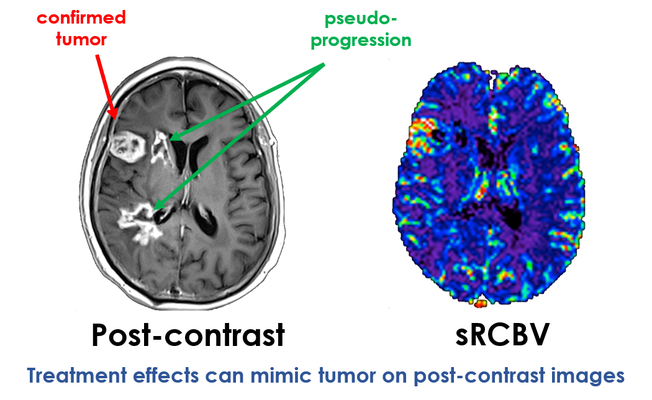IB Neuro
Imaging Biometrics|
Information source:
Vendor
Last updated: June 6, 2024 |
General Information
| General | |
|---|---|
| Product name | IB Neuro |
| Company | Imaging Biometrics |
| Subspeciality | Neuro |
| Modality | CT, MR |
| Disease targeted | Brain tumors, stroke |
| Key-features | Automated quantification of DSC perfusion parameters |
| Suggested use | |
Technical Specifications
| Data characteristics | |
|---|---|
| Population | All MR and CT neuro perfusion exams |
| Input | GRE-EPI |
| Input format | DICOM |
| Output | RGB, monochrome (quantitative), fused overlays, automated AIF information, and reporting of DSC parameter maps |
| Output format | Quantitative DICOM |
| Technology | |
| Integration | Integration in standard reading environment (PACS), Integration via AI marketplace or distribution platform, Stand-alone third party application, Plugin application to OsiriX environments |
| Deployment | Locally on dedicated hardware, Locally virtualized (virtual machine, docker), Cloud-based, Hybrid solution |
| Trigger for analysis | Automatically, right after the image acquisition, On demand, triggered by a user through e.g. a button click, image upload, etc. |
| Processing time | 3 - 10 seconds |
Regulatory
| Certification | |
|---|---|
| CE |
Certified,
Class I
, MDD
|
| FDA | 510(k) cleared , Class II |
| Intended Use Statements | |
| Intended use (according to CE) | |
Market
| Market presence | |
|---|---|
| On market since | 05-2018 |
| Distribution channels | Eureka Clinical AI, QMENTA, Blackford Analysis, Medimsight, CorTechs Labs, Tempus Pixel, aycan Medical Systems, Pixmeo, Calantic |
| Countries present (clinical, non-research use) | |
| Paying clinical customers (institutes) | |
| Research/test users (institutes) | |
| Pricing | |
| Pricing model | Pay-per-use, Subscription, One-off payment with service contract |
| Based on | Number of installations, Number of analyses |
Evidence
| Evidence | |
|---|---|
| Peer reviewed papers on performance |
|
| Non-peer reviewed papers on performance | |
| Other relevant papers |
|
